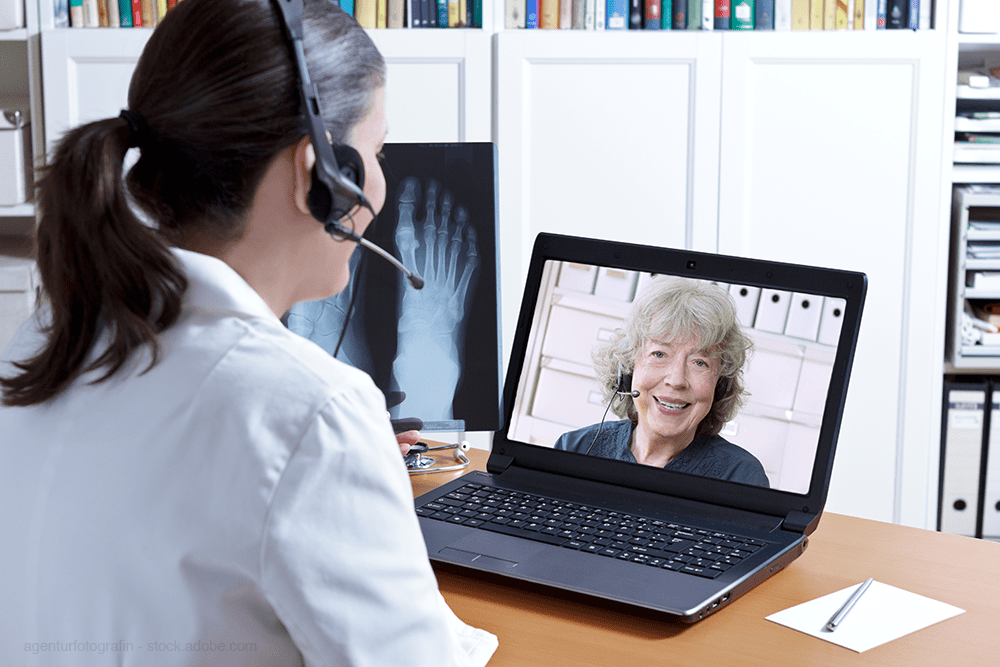How to stay ahead in the telehealth revolution?
The covid-19 pandemic has wholly altered the way how healthcare services are delivered. Telehealth has become the new norm, and according to medical industry experts, patients will continue to access healthcare virtually. According to Frost & Sullivan consulting, the U.S. telehealth market will grow seven-fold by 2025, compounding to the annual growth rate of 28%. This growth rate is even more fuelled by Medicare and Medicaid, which are now paying the same rates for virtual visits and in-person appointments, which has helped smaller practices offer remote services similar to large providers. A further push from HIPAA, allowing non-public facing remote communication platforms like Zoom for communication with the patients, has resulted in nearly $250 billion of healthcare spending coming from virtual sources.
Despite all the developments, healthcare providers are still struggling to dissolve the digital divide for certain populations. One of the primary reasons is that the legacy and certain new age EHR systems do not provide seamless service for Telehealth solutions, which leads to the care team and patient dissatisfaction. According to the American Psychological Association, only 11% of the older adult population feel comfortable using telehealth due to age-related cognitive impairment or other reasons. Furthermore, accessibility to high-speed internet services and lack of digital skills or resources affect millions of U.S. households.
Since telehealth is here to stay, so there are numerous actions that healthcare providers can take to dissolve the barriers that some patients face in virtual care. According to the APA, the first thing that healthcare providers need to do is to acknowledge that telehealth visits can feel awkward. Still, they have to reassure their older patients that they will feel more comfortable with the technology with time. The second thing is to initiate mock visits a couple of days earlier than the actual appointment for patients who are new to telehealth services. It has been that the clinics that have conducted mock visits have shown substantial improvements in online appointments. Hence the healthcare providers can employ administrative staff to conduct practice sessions with the older patients. APA also recommends providing the older patients with written instructions in large font sizes and screenshots to guide the patient through each step of the telehealth process. Next but not least is to ask a lot of questions to ensure their understanding and comfort.

With the widespread use of telehealth, the ‘webside’ manner has become necessary for physicians, nurses, and other providers to virtually maintain a healthy doctor/patient relationship. Since being virtually means that the care team will not be read body language and sense things intuitively, so below is a list of helpful pointers to make virtual visits more successful:
- Become focal points by putting yourself in the center of the frame.
- For better stimulation of eye contact, look directly into the camera and not the eyes of the patient.
- Adjust the lighting of your surroundings so that patient can see your face without any glare.
- Remove distracting objects or sounds from the background.
- Ask patients to position or reposition themselves according to the needs of medical examination.
- Take note of surroundings or home environment as it can be really helpful. For example, if a patient complains about allergy symptoms and the room is filled with clutter and dust, then that is valuable information for diagnosis.
Now, since healthcare providers will be spending more and more time in front of a screen, ensuring caregiver comfort becomes a priority. Moving from fully-equipped patient rooms to sitting in front of laptops all day can lead to health and wellness issues, which can drastically affect webside manners. Hence, focussing on ergonomics will improve webside manner and help increase focus and boost the energy of the caregivers, which will ultimately enhance the patient experience. Below is a list of helpful pointers that can be used to improve the comfort of virtual caregivers:
- Invest in height-adjustable furniture such as standing desks and adjustable monitor arms.
- Coach the virtual care providers on adopting neutral postures during virtual care. Some of these include keeping knees at the same heights as hips, keeping head level and facing forward, having full support for back and feet etc.
- Some easy stretches can also be taught to intentionally interrupt sitting time every 30 minutes.

So we have seen that though rapid expansion of telehealth has brought numerous benefits to patients but there is still work required to ensure that all the patients can access the services regardless of their age, socioeconomic status or digital literacy. Also, providers must be proactive in fostering trust with patients virtually while also considering the physical health of the care team.
At Elixir, we understand the need of healthcare organizations to keep ahead in this telehealth revolution. That is why Elixir’s Telehealth solution is uniquely integrated to facilitate telehealth video calls, schedule appointments, and send reminders. Elixir is such an open platform that it can integrate with the choice of your telehealth tools. Intuitive automation within the system makes it easy to schedule group or individual appointments, take notes, and refer back these meeting notes and meeting recordings.
Elixir Practice Management Suite is a comprehensive solution consisting of four modules that fit rightly into your healthcare business irrespective of your facility size and type. The Elixir Contact Center module helps in managing the entire facility census and the patient intake process. At the same time, the Elixir EHR solution aims at delivering an end-to-end seamless patient care experience. The third module is Elixir Billing, and it effectively fetches data from any EHR platform to process medical claims and manages the entire revenue cycle. Elixir Patient Portal is the last module, and it provides an integrated experience for the patients.
Do fill out this Demo Request form if you feel that Elixir will be an asset to streamline your care giving process.

